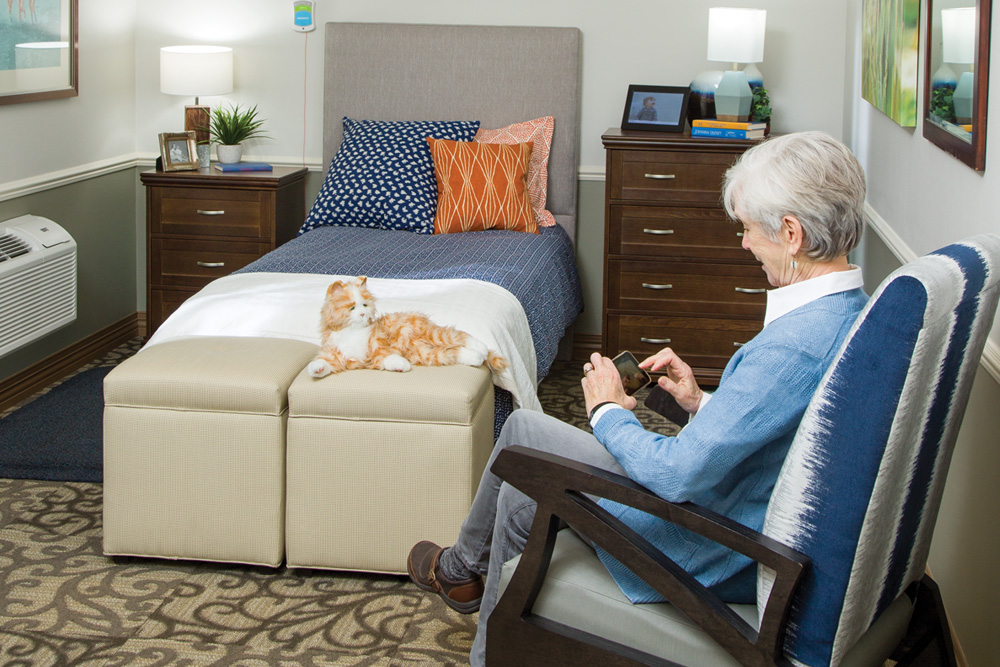With the demand for Memory Care communities on the rise, incorporating innovative design tricks will be key to supporting the needs of these residents. In addition to reduced mobility, strength and visual acuity, residents may have added concerns, like wandering or psychological symptoms.
1. Select simple fabrics
When choosing fabrics, stick to lighter colorways – dark fabrics may appear as a missing space or hole. Similarly, keep the patterns simple. Complex patterns, specifically those with dots, could be mistaken for bugs or debris, while textured fabrics could encourage residents to pick at the fabric. Like in all Senior Living environments, vinyl fabrics are a great choice for Memory Care spaces because they’re moisture resistant and easy to wipe down.


2. Choose innovative wayfinding
Since Memory Care residents are prone to wander, it’s important to help them find their way throughout the community. Clear signage and wayfinding materials, like 3D texture panels, are a good place to start. By combining color and texture into a wayfinding material, the panels help guide residents as well as boost mood, improve behavior and increase calmness.
3. Create intimate dining spaces
Consider table sizes that seat two to four residents. This can create a more comfortable setting for residents to converse with each other, stimulating social interaction. Plus, a more intimate setting will help minimize distractions for residents trying to complete one specific task. Create the ideal dining space for Memory Care residents with tables and chairs from our dining furniture selection.


4. Encourage personal décor
Create a personalized entryway outside of the resident’s room by using recognizable décor from home. It’ll help the resident find their way and feel more comfortable. Start by including photos, and consider adding memory boxes so residents can add personal mementos.
5. Support physical stimulation
Movement is an important part of keeping residents healthy. Not only can movement help generate a calming effect, it can also improve circulation and prevent pressure ulcers. Consider using rocking chairs to give residents a chance to move and stimulate different areas of the brain. Innovative stationary rockers are a great option because they feature a seat and backrest that rock while the leg and arm assembly stays in place for increased safety.


6. Design activity zones
Appeal to residents’ hobbies and foster an environment that promotes choice, fun and socialization by including dedicated spaces for art, woodworking, exercise and other activities. For example, incorporate space and furnishings that accommodate sing-alongs, jam sessions and performances by local musical groups. Music is a great way to spark memories and conversation among residents. Another easy way to create a dedicated space is by including a Life Station, which encourages residents to engage with familiar activities.
7. Opt for smart accessories
When putting together your accessories package, look for innovative products designed specifically for Memory Care environments. From interactive video games to “exergaming,” which combines immersive entertainment and therapy, there are an array of tech-savvy accessories that foster engagement and fun. Consider adding in companion pets, which provide happiness and intergenerational play for seniors by responding to a resident’s presence, voice and touch.

As you create your next Memory Care space, use these tips for calming, supportive environments for residents. Read more on improving dining for Memory Care or contact us today to start your Senior Living project.
Are you an interior designer? See how we can help with your Senior Living design »

